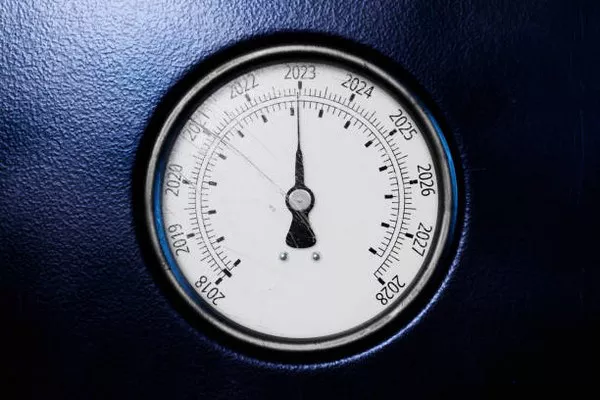In the annals of scientific discovery, few inventions have had as profound an impact on both theoretical understanding and practical application as the mercury barometer. This remarkable instrument, which measures atmospheric pressure, was invented by the Italian physicist and mathematician Evangelista Torricelli in the mid-17th century. Torricelli’s pioneering work not only provided the means to forecast weather changes but also significantly advanced the study of fluid dynamics and atmospheric science.
The Life and Times of Evangelista Torricelli
Born on October 15, 1608, in Faenza, Italy, Evangelista Torricelli displayed an early aptitude for mathematics and science. Orphaned at a young age, he was raised by his uncle, a Camaldolese monk, who recognized his intellectual potential and ensured he received a robust education. Torricelli studied under Benedetto Castelli, a mathematician and student of Galileo Galilei, at the University of Sapienza in Rome. This connection to Galileo’s intellectual circle profoundly influenced Torricelli’s scientific trajectory.
In 1641, Torricelli was invited by Galileo to Florence, where he assisted the aging scientist. Although Galileo died the following year, Torricelli stayed in Florence, where he was appointed to Galileo’s position as the chair of mathematics at the University of Pisa. It was during this period that Torricelli made his groundbreaking discovery of the mercury barometer.
The Invention of the Mercury Barometer
The invention of the mercury barometer was rooted in the scientific curiosity about the behavior of fluids and the nature of the vacuum. Before Torricelli’s work, the prevailing belief, influenced by Aristotle, was that nature abhorred a vacuum (“horror vacui”), a concept that suggested a vacuum could not exist. This notion was challenged by observations that could not be easily explained by existing theories, such as the inability of suction pumps to raise water more than about 32 feet.
Inspired by these questions, Torricelli conducted a series of experiments to explore the properties of air and the nature of vacuums. In 1643, he filled a glass tube, approximately one meter long and closed at one end, with mercury. He then inverted the tube into a dish of mercury, creating a situation where the mercury in the tube descended, leaving a vacuum at the top. The height of the mercury column stabilized at around 76 centimeters (or 760 millimeters), a phenomenon that could not be explained by the principle of horror vacui alone.
Torricelli hypothesized that the mercury column was held up by the pressure of the air, providing the first empirical evidence of atmospheric pressure. He realized that the space above the mercury column in the tube was indeed a vacuum, countering the Aristotelian notion. This apparatus, which came to be known as the mercury barometer, was revolutionary because it demonstrated that atmospheric pressure could be measured and that a vacuum could exist.
The Impact of Torricelli’s Invention
The invention of the mercury barometer had profound implications for both science and practical applications. It allowed for the measurement of atmospheric pressure, which is fundamental to understanding weather patterns. For the first time, scientists and meteorologists could predict weather changes with greater accuracy, based on the fluctuations in atmospheric pressure.
Moreover, Torricelli’s work laid the groundwork for further advancements in the field of fluid dynamics and the study of gases. His experiments influenced other prominent scientists of the time, including Blaise Pascal, who extended Torricelli’s work to demonstrate that atmospheric pressure decreases with altitude. Pascal’s experiments on the Puy de Dôme mountain in France provided additional confirmation of the principles underlying the mercury barometer.
Scientific Legacy and Recognition
Evangelista Torricelli’s contribution to science was immense and multifaceted. His invention of the mercury barometer was a pivotal moment in the history of science, marking a transition from philosophical speculation to empirical investigation. The principles underlying the barometer are still fundamental to modern atmospheric science and meteorology.
Torricelli’s work was recognized by his contemporaries and has continued to be celebrated in the centuries since. In addition to the barometer, Torricelli made significant contributions to mathematics, particularly in the field of calculus, where his work on infinitesimals prefigured later developments by Isaac Newton and Gottfried Wilhelm Leibniz.
Despite his relatively short life—Torricelli died in 1647 at the age of 39—his impact on science was enduring. The unit of pressure, the torr, is named in his honor, reflecting the lasting significance of his contributions.
The Broader Context of the Mercury Barometer’s Development
Torricelli’s invention did not occur in isolation;it was part of a broader movement in the 17th century that saw the emergence of experimental science. This period, often referred to as the Scientific Revolution, was characterized by a shift away from reliance on ancient authorities and towards observation, experimentation, and mathematical description of natural phenomena.
The mercury barometer also exemplifies the interplay between theoretical and practical knowledge. While Torricelli was motivated by a theoretical interest in the nature of vacuums and atmospheric pressure, the practical implications of his invention were quickly recognized. The ability to measure atmospheric pressure accurately had immediate applications in meteorology, navigation, and even medicine.
Furthermore, the invention of the mercury barometer spurred further technological and scientific innovations. It paved the way for the development of more sophisticated instruments for measuring pressure and other atmospheric properties. The principles discovered by Torricelli and his contemporaries remain central to modern physics and engineering.
See Also THE USE OF BAROMETERS
Conclusion
Evangelista Torricelli’s invention of the mercury barometer stands as a testament to the power of human curiosity and the scientific method. Through meticulous experimentation and insightful reasoning, Torricelli challenged long-held beliefs and opened new avenues of understanding about the natural world. His work exemplifies the transformative impact that a single scientific discovery can have, influencing both theoretical frameworks and practical applications for centuries to come.
The mercury barometer not only revolutionized the study of atmospheric pressure and weather prediction but also contributed to the broader advancement of science during a pivotal era. Torricelli’s legacy continues to inspire scientists and engineers, reminding us of the enduring value of inquiry, experimentation, and the pursuit of knowledge.

